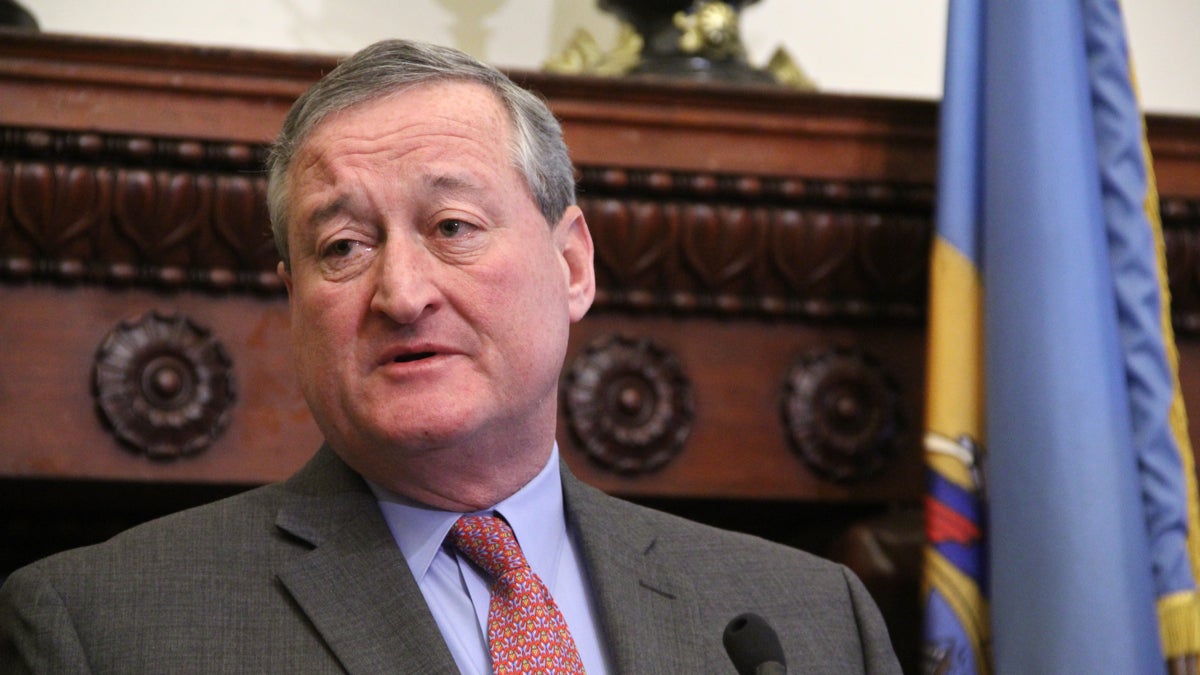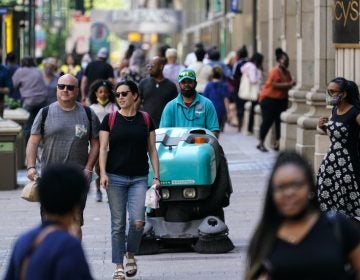Kenney tweaking stop-and-frisk more than ending it
Listen
Philadelphia Mayor Jim Kenney. (Emma Lee/WHYY)
Over the years, stop-and-frisk has acquired a lot of enemies. Former Philadelphia Mayor Michael Nutter wasn’t one of them, he supported the policy. So in his campaign for mayor, as if to further distinguish himself from the outgoing city boss, Jim Kenney made lambasting the practice a talking point.
“It never was a good policy, it’s not a good policy now, and in light of Ferguson and all the problems we’re dealing with in this country, it’s something that needs to go away, and go away quickly,” Kenney said on the campaign trial.
But now Kenney’s realizing that it’s not exactly something that can be upended, forcing him to tweak his position. Stop-and-frisk shouldn’t go away quickly, he says now. Instead, Kenney argues the practice shouldn’t target minorities, and should be done legally.
Nonetheless, Kenney maintains his position hasn’t changed.
“Pedestrian stops were going on long before Mayor Nutter placed an emphasis on ‘stop and frisk’ as a crime fighting strategy,” Kenney said in a statement. “What we’re doing now is building upon and continuing to strengthen the police department’s efforts to ensure that all pedestrian stops are constitutional and applied as fairly as possible across demographic groups.”
Drexel University Criminal Justice Professor Robert Kane said the mayor is now taking a more realistic and nuanced position, but it’s less punchy than his campaign promise.
“Implementing such a drastic policy change is very difficult, if not, impractical,” Kane said.
The last time the police department’s stops and frisks were audited shows that nearly four out of ten were illegal — in other words, pedestrians were stopped without there being what lawyers and police officials call “reasonable suspicion.”
Police Commissioner Richard Ross said some of those problematic pedestrian stops are explained by bad paperwork, like not getting a supervisor’s signature, for instance.
“I mean, I think that gets lost in all of this talk in suggesting that it’s a strategy per se, because we’ve never viewed it as a strategy,” Ross said.
Ross said the department will be doing new training to make sure officers understand what a proper stop is, and also placing more supervisors over how stops and frisks are reported.
Internally, Ross said, nobody in the department calls stopping a pedestrian and perhaps patting down the suspect’s outer clothing for a weapon a “stop-and-frisk” interaction, but rather a normal part of daily policing. Ross calls those interactions a pedestrian investigation, or a “Terry stop,” taking its name from the 1968 U.S. Supreme Court case that gave officers the right to stop, question and pat down someone suspected of criminal conduct. When the legal guidelines are followed, Ross said, the interaction is beyond reproach.
“When you stop a person with reasonable suspicion, it’s just one part of what you do,” Ross said.
Professor Kane, meanwhile, said when stop-and-frisk becomes a policy to drive down crime, it runs into trouble.
“Stop-and-frisk rarely leads to an arrest, and really what it does is alienate entire sections of communities,” he said.
The problem isn’t stopping and patting someone down, Kane said, but the way police interpret the freedom to do so. The most recent numbers show that 80 percent of all of the 200,000 stops Philadelphia police did in 2014 were focused on minorities.
Since the ACLU sued the city over stop and frisk, Philadelphia’s department has been operating under the court’s supervision, forcing it to report every stop and frisk to an independent monitor. The latest report on the pedestrian stops and frisks, which will include numbers for 2015, is expected to be released in the coming weeks.
WHYY is your source for fact-based, in-depth journalism and information. As a nonprofit organization, we rely on financial support from readers like you. Please give today.




